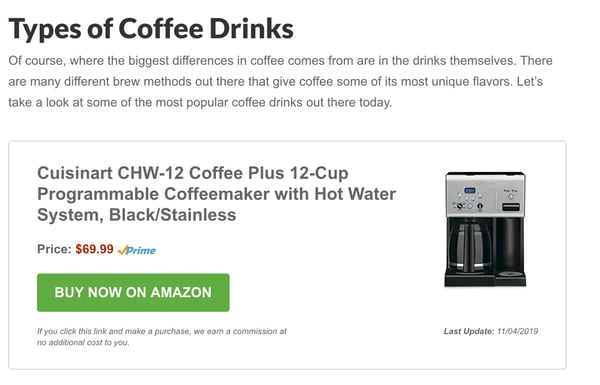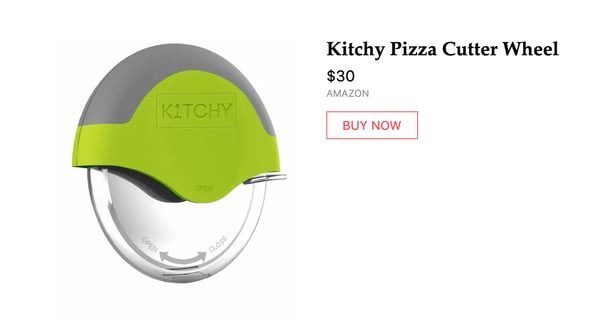As Jerry Maguire once said -- "Show me the money."
That phrase is probably something you've thought of as a marketer who has invested in paid advertising.
With paid advertising, you want to enhance your marketing campaign by showing up in the right place, at the right time, with the right content.
But sometimes, running paid ads -- like pay-per-click (PPC) on Google -- feels like you're spending a lot of money without seeing any results.
Whether it's because your ads are disruptive or need a redesign, most consumers ignore ads online. In fact, 64% of respondents in a HubSpot study said ads are annoying and intrusive.
Plus, 45% of people report, "I don't notice online ads anymore, even if I don't block them."
Contextual targeting is the solution to that problem.
Below, let's review what contextual targeting is and the difference between contextual and behavioral targeting. We'll also explore contextual keyword targeting and how to get started with contextual ads.
For example, if you're running a local marketing campaign for your coffee shop, you might create a PPC ad. Then, if someone who lives nearby is reading a blog about the best types of coffee, your ad might show up.
This is a good example of contextual targeting because Google used the person's location, so your ad is only showing up to people who are in the vicinity of your shop.
Additionally, in this example, this person is interested in coffee and wanted to read about different types of coffee, so an ad for a coffee shop isn't disruptive to the user experience. This makes it more likely that they will respond positively to your ad.
So, what's the difference between contextual targeting and behavioral targeting?
Contextual Targeting vs. Behavioral Targeting
While contextual targeting is done through matching keywords and topics, behavioral targeting is when ads appear to users based on their online behaviors.
Behavioral targeting could include browsing history, links clicked, time spent on the page or site, how recently they've searched for something, and how they engaged with a site overall.
Visitors with similar patterns are grouped together, so advertisers can specifically target a group of people with a certain browsing history. This is typically called retargeting.
For instance, let's say I was in the market for new shoes. (And, let's be honest -- I'm always in the market for new shoes.) I begin searching for new shoes by typing in "running shoes" or "hiking boots." I'm just beginning my research, so I don't make a purchase. Later that night, I go on Facebook, and all I see are ads for hiking boots and running shoes. That is behavioral targeting in action.
Let's say I'm in that same situation -- researching new shoes. During my research, I start reading a blog on the best type of running shoes. On the right-hand side, I see a few ads for new running shoes, as well as a nearby running store in my area. That is contextual targeting.
But how does contextual targeting really work? One word -- keywords.
Contextual Keyword Targeting
Contextual targeting is done through keywords and topics -- or central themes of a website.
When you get started with your PPC ads in Google, you can select highly targeted keywords and topics so your ad only shows up on sites related to those themes.
These keywords will define where you want your ads to appear.
For example, if you're running an ad for dumbbells, you might select keywords like "dumbbells," "strength equipment," or "workout equipment." Then, your ad would only show up on sites with those keywords.
You can also input negative keywords. In this case, you might include "barbells" as a negative keyword term, so your dumbbell ad doesn't show up when someone isn't even searching for dumbbells.
If you choose to run an ad solely based on topics, instead of keywords, you might run that same dumbbell ad and choose a theme of "health and fitness." Going this route means that your ad will be less targeted, and could have less impact and fewer results.
According to Google, each ad group should contain anywhere from five to 50 keywords. You can use the Google Keyword Tool to help build your keyword list.
To build your keyword list, don't use long-tail keywords like you might for organic campaigns. With paid advertising, you'll want to use shorter, sometimes broader keywords.
So, what do contextual ads look like in action? Let's review a few examples.
1. Coffeemaker Example
Roasty is a free blog that focuses on finding and brewing delicious coffee. While I was reading an article, "A Complete List of Every Type of Coffee That Exists", I came across an ad for a Cuisinart Coffeemaker.
This ad wasn't disruptive to my reading process because it fit in well with the content I was reading.
See image below for what the ad looked like:

2. Pizza Cutter Example
Kitchn is an online daily food magazine. While reading, "How To Make Awesome Pizza at Home," I came across an ad for a pizza cutter.
This is a great example of contextual ads in practice:

3. Delta Example
Recently I was perusing a Forbes article, "How These 6 Millennials Travel The World For A Living," when I came across an ad for Delta.
This is a contextual ad because I was reading an article about travel, and then I saw an ad for an airline -- it's likely Delta chose "travel" as a keyword to target for their ads. Plus, the ad was even more targeted because it included locations close to me in Orange County, California:

When you're running a paid advertising campaign, it's important to be as specific as you can with your targeting options. Ultimately, your targeting can make or break the success of your ad.
from Marketing https://ift.tt/33mMXyb
via
How Many Types of Coffee Drinks are There
ReplyDelete